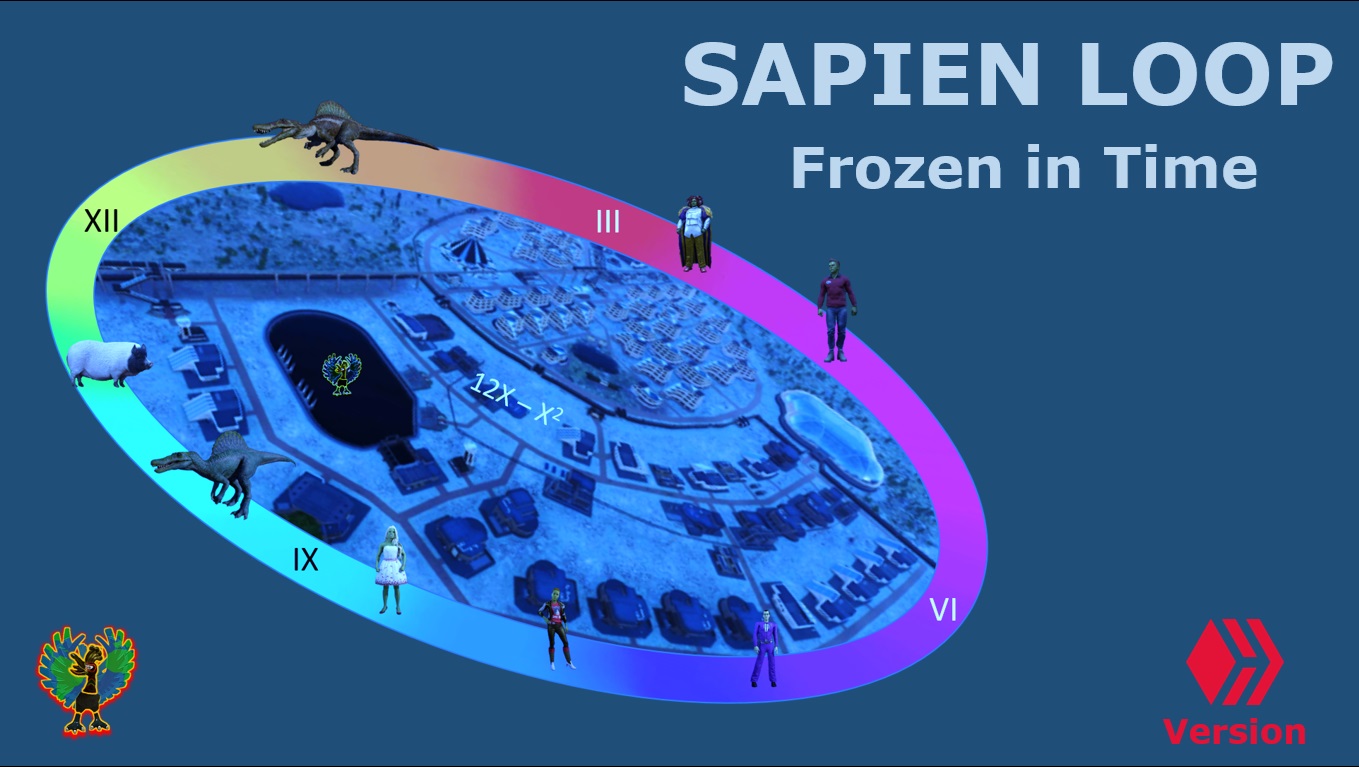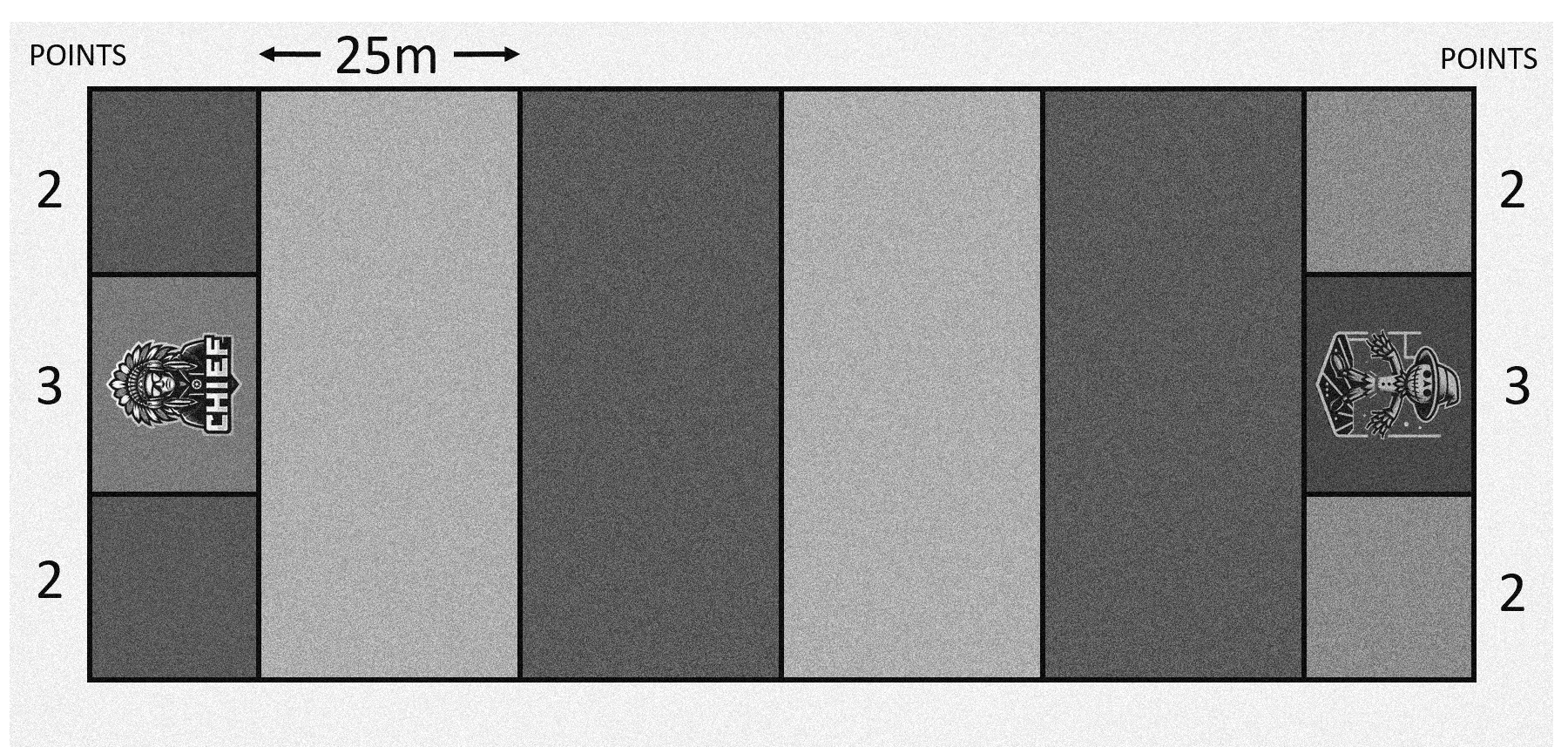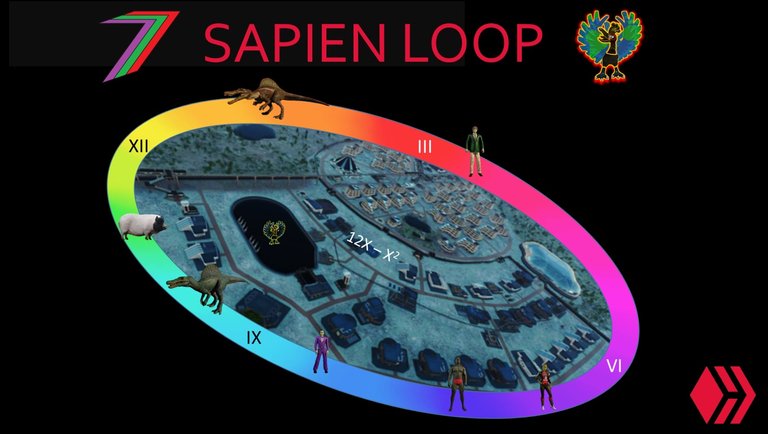
Chapter 15: Rules of Pound Ball

There were twenty-four teams in the Pound Ball League: two teams from each district. One team represented the main district city, and the other represented the rural communities. The twenty-four teams were divided into four divisions. These were the North, South, West, and East Divisions. Each division consisted of six teams from three districts. Below are the teams from all four divisions.
North Division
- North City Pioneers
- North Rural Mountaineers
- Capital City Chiefs
- Capital Rural Generals
- Phoenix City Flyers
- Phoenix Rural Cultivators
South Division
- Adoy City Revolutionaries
- Adoy Rural Fishers
- Carrington City Engineers
- Carrington Rural Blue Collars
- Tarrus City Scholars
- Tarrus Rural Fruitarians
West Division
- West City Priests
- West Rural Clergymen
- Agriah City Dreamers
- Agriah Rural Scarecrows
- Farnham City Red Sapes
- Farnham Rural Farmers
East Division
- Cellrebrum City Enforcers
- Cellrebrum Rural Brawlers
- Lake City Surfers
- Lake Rural Miners
- Coastilly City Sailors
- Coastilly Rural Casuals
Each team played sixteen games in a season. They played each team in their own division twice and each team in one over division once. The other division they played rotated each season. Therefore, they played the same other division every three years. After the sixteen games, the top two teams from each division qualify for the playoffs. The division winners were seeded from one to four based on their season record. The division runners-up were seeded from five to eight. This was also based on their season record. From here, a knockout tournament began.
In game one, the first seed played at home against the eighth seed.
In game two, the fourth seed played at home against the fifth seed.
In game three, the second seed played at home against the seventh seed.
In game four, the third seed played at home against the sixth seed.
In the next round, the winner of game one played the winner of game two. The winner of game three played the winner of game four. The teams with the better season record played at home. The winners of these games played in the Grand Final. The Grand Final was played at a preselected stadium.
How was the game played?
Pound Ball was a simple seven-on-seven game. The objective of the game was to score as many points as possible. Points were scored when players crossed the goal line with the ball or when they caught the ball on the other side of the goal line. If the team scored in the centre third of the field, it was awarded three points. If the team scored in either of the outside thirds of the field, it was awarded two points.
The field was divided into four equal twenty-five-metre sections. The team possessing the ball had one minute to progress to the next section; this was timed by what was referred to as the possession clock. If they failed to do so, the ball was given to the defending team. The team could progress down field by either running with the ball or throwing the ball. There was also a game clock. This displayed how much time was left in a half. The possession clock became invalid if the game clock had less time remaining before the end of the half or game.
There were three offensive positions. These were the throwers, catchers, and blockers. Their numbers could identify them. Throwers were numbered from 1 to 5. Catchers were numbered from 6 to 10, and blockers were numbered from 11 to 15.
Throwers were the only players allowed to throw forward passes. They could do so anywhere on the field. Catchers were the only players allowed to catch forward passes. Blockers were the only players allowed to block defenders to protect either catchers or throwers. Any player could run with the ball or throw the ball backwards to another player. Any player could catch these backward-thrown passes. Any player could kick the ball. However, if a kick landed on the ground, possession was awarded to the defensive team.
If a forward pass was not caught, the team that had possession of the ball had to start back at the start of the section from where the ball was thrown. Ten seconds were run off the clock before play continued. If a player was tackled, ten seconds were run off the clock before play continued. If a player ran out of bounds, the clock stopped. Play continued from inside the centre third of the field; no time was run off the clock.
A team must have at least two throwers, two catchers, and two blockers on the field at all times. The choice of the seventh player was to the discretion of the team. Most teams chose an extra blocker. The Phoenix City Flyers were one of the few teams to use three catchers. This helped them to win their first and only Grand Final. Altogether, each team had fifteen players, five from each position. Teams could substitute freely when play had stopped.
There were no designated defensive players. Offensive players played the role of defenders when their team did not have possession of the ball. In the event of a turnover, the defensive players immediately resumed their offensive roles. Play did not stop until someone was tackled, ran out of bounds, a forward pass was incomplete, or the ball was kicked. The time to reach the next section also restarted. Therefore, the breakdown of player positions that applied to the offence also applied to the offensive positions the defensive players would have if their team got the ball back.
Most of the rules were simple. When a player broke a rule, it was called a foul. Players were not allowed to do things beyond the roles of their designated position. Players were also not allowed to use excessive force, such as punching, kicking, or strangling opponents. Players were also not allowed to turn invisible or shapeshift.
Fouls for the team with possession of the ball could include time run-off the clock, or possession moved to the start of the section or even moved back to the previous section. Fouls for the defensive team could include resetting the clock or advancing the team with possession to the next section. For the most serious fouls, players could be sent off for the rest of the possession without substitution. This would temporarily reduce the number of players on the field for that team.
The game was played over two halves of thirty minutes of game time. Each half lasted about forty minutes when stoppages were included. Between the two halves was a halftime show, which lasted around thirty minutes. The shows consisted of mostly local performers. With the arrival of television, these shows became more elaborate.
Every game had a winner. If the score was tied at fulltime, extra time was played. Teams’ possessions alternated until one team scored and the other did not. All scores in extra time were worth two points.
Sapien Loop: End of an Era

Sapien Loop: Frozen in Time is the sequel to the book Sapien Loop: End of an Era. Sapien Loop: End of an Era is available on Amazon, in collection series on my @spectrumecons account, and in individual chapters in my @captainhive account.
Future of Social Media

Captain Hive is here

Remember to catch me on Spectrumecons, click link below.
